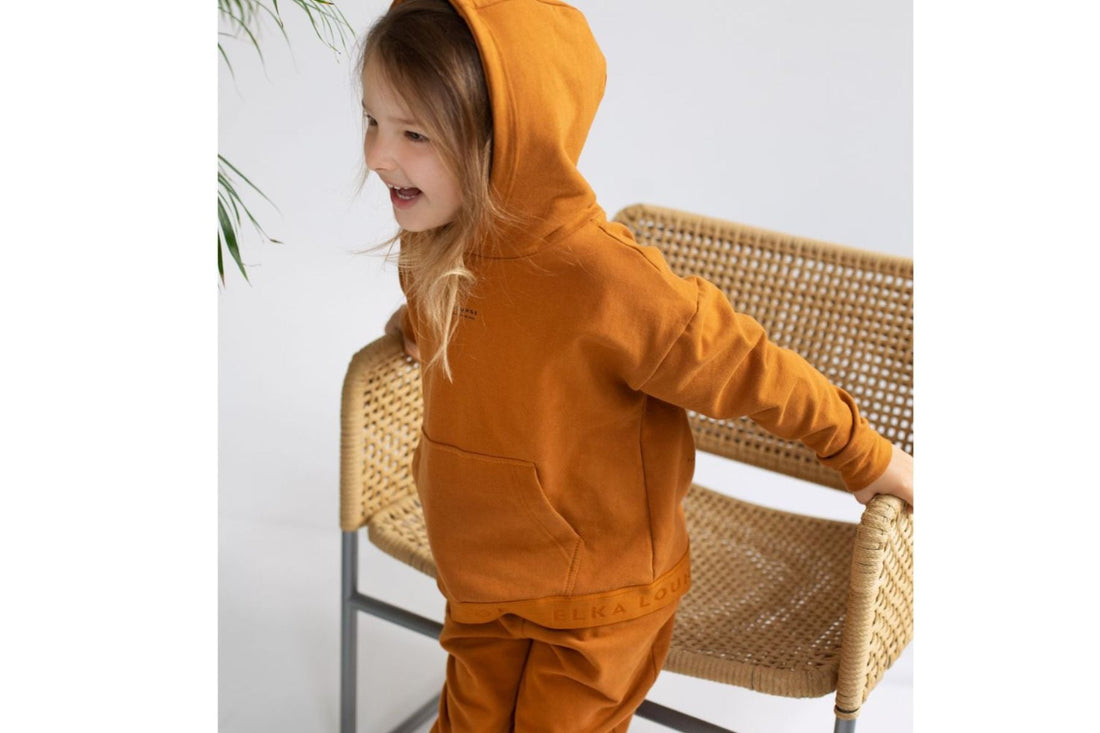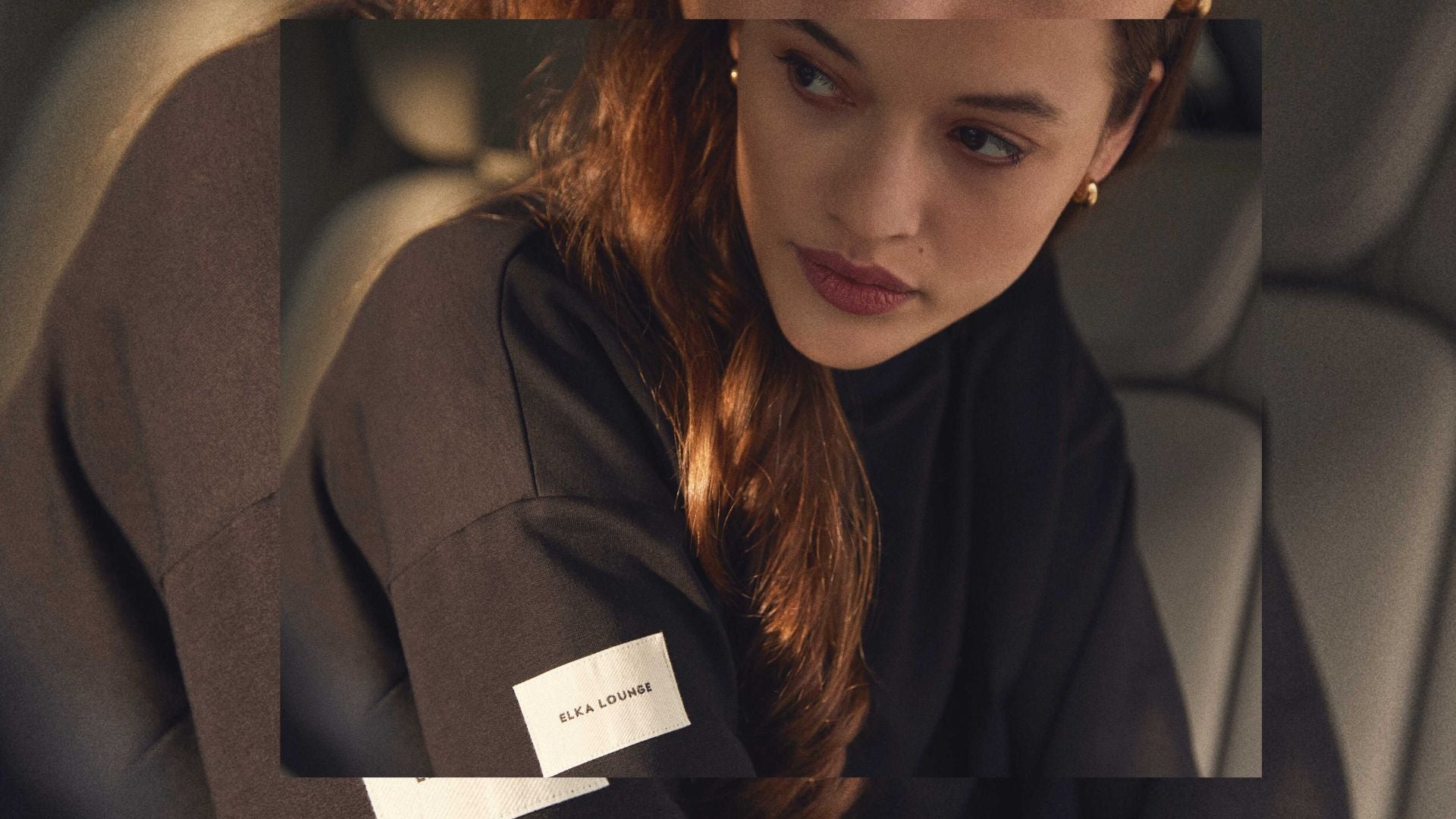
With Respect to You and Nature: What Does ELKA do for Sustainability?
Share
As customers, we can support sustainable fashion and a sustainable lifestyle in many ways. But let's look at it from the other side for a moment. How should brands behave, and what is ELKA LOUNGE doing for sustainability?
Vision and Conscience
It's obvious that the goal of every business is profit, but in our view, it can't be the sole motivation. Sustainable brands have their own vision, they want to make a change and convey certain values. And conscience? That's harder to discern, and every entrepreneur must come to terms with it on their own. It's up to each individual whether they truly want to convey values and believe in what they do, or if they're doing something solely for marketing reasons.
ELKA has never been swayed by the lure of quick profit. From the beginning, we've adhered to principles that we'll discuss further below, and we'll never waver from our vision. We want to be a global brand that does business well, but above all, responsibly.
Quantity and Locality
Quantity is the biggest challenge in the entire fashion industry, and as customers, we should buy less. However, we also need to consider that not everything can be sourced from local creators. There isn't enough artisanal power to cover all needs, and at the same time, craftsmanship is often inefficient and not the best route.
Why? Because human labor is practically the most expensive element in all production, and that reflects in the product's price. If the process is to be sustainable and ecological, it requires a significant initial investment. Sure, making one piece of underwear for a higher price is great compared to five cheap ones, but we have to be sure that it will truly replace those 5 cheaper ones – either in terms of durability or longevity. Will the customer wear it for 5 times longer than the cheap piece?
What are we to do? There are mandatory minimums when the quantity of products is sufficient to cover all input costs, but at the same time, they might not fill all store shelves or outlets.
What do we do? We advocate respecting technological progress and certain rules that establish appropriate quantities and prices. They allow us to produce responsibly and remain financially responsible. This also enables people to invest in other beneficial industries. Apart from raw materials such as cotton, we source everything from local manufacturers or suppliers – from boxes and tags to the final fabric treatment and complete production. We always buy quantities that are cost-effective yet don't force us to sell products with minimal margins.
Margins and Unnecessary Costs
The larger the margin, the more a brand can improve – whether it's searching for better suppliers, developing new products, or even writing a blog about sustainability.
Unnecessary costs include marketing expenses, packaging, renting prime locations for brand stores, and other things that brands don't necessarily have to do, thus wasting their margin on unnecessary areas instead of improving products, production processes, and their sustainable footprint.
What do we do? 95% of our sales come from our online shop, which means we have fewer unnecessary costs. We've come up with the concept of "Your Moments," where we photograph real people at home, avoiding the need for expensive models and renting artificial settings. We also consistently reduce marketing expenses and reinvest the majority of funds gained back into improving all processes.
Using the Right Materials
Synthetic materials don't occur naturally, they can't be easily recycled, and they don't work well on your body. Recycled materials are great, but it's all about their proper combination to allow re-recycling. Brands should also strive not to waste additional materials such as rivets, tags, badges, or even polyester labels. These are unnecessary with natural materials. This complicates recycling, incurs unnecessary costs, and consumes energy.
How do we do it? 80% of our sales come from products made of 100% cotton. Our favorites are cotton, bamboo, and modal, which we recommend for comfortable and functional underwear. Recently, we're transitioning to certified organic cotton. We use micromodal and are looking for even more natural alternatives. We're moving towards completely cotton labels and natural buttons. We use fully recycled packaging, including natural paper tape with natural adhesive. We avoid unnecessary fasteners for tags, and you won't find any unnecessary plastic components in our brand. We use natural dyes for printing and try not to mix materials unless necessary.
Transport and Distribution Chain
If brands source all their materials from countries thousands of kilometers away (whether it's labels or tags), they might be saving in terms of cheaper labor or unsustainable production. While the customer might benefit from cheaper products, it's not due to efficient production. Transporting one package to one address isn't ideal, and we lean towards aggregating goods at a single location. Another suitable option is aggregated pick-up points.
What do we do? 80% of our operations occur in the Czech Republic. We contribute to the "Zásilkovna" delivery method and look for transport services that introduce significant innovation in their field, which we can utilize. If you have any suggestions for improvement in this regard, we'd appreciate hearing from you.
Minimum waste
It's not just about eliminating disposable packaging. It's a whole system of activities – for example, producing multiple products from the same material, utilizing production waste for other products, packaging with secondary uses, saving on paper, investing in self-sufficient buildings, and more. Lastly, it includes collaborating with companies that buy textile remnants.
What do we do? We create shorts from bedding remnants, masks from shorts scraps, and bags from mask scraps. What to do with leftover bags? That's something we're thinking about. Our facility produces waste only from our employees' regular consumption; the rest goes to recycling, leaving our customers with only packaging for blue bins. For our operations, we purchase four types of materials in a practical manner, which we strive to use for as many products as possible.
Assortment, Basics, and Bestsellers
Brands often feel that churning out dozens of new models and collections is the way to retain customers. Yet, the side effect of this is constant waste of energy on things like new photos, videos, product development, advertising, and more. The effect? Only consumed energy, resources, and cheap products bought for one-time use.
What do we do? We've abandoned the collection process and produce new releases gradually and with fewer items. We monitor our bestsellers and focus on basic pieces that are "made to last" and won't burden us with constant new expenses each quarter.
Transparency
You've surely encountered claims from big chains. On one hand, there's sustainability, but on the other, there are shelves filled with underpriced goods. The same goes for using certifications. Unfortunately, many brands think that if a fabric has a certification, they can apply it to the whole product, even if they use non-natural dyes or unnecessary accessories.
What do we do? We're open about our practices. For each product, we list the certifications of all components. We don't claim to be perfect. We know sustainability is a long journey and we want to work on everything, but we also have to respect all other needs of our operation. Similarly, we know we could be more active in supporting sustainable projects, but we still hold onto the idea that the first step is refining our main activities, and only then can we move on to supporting others. It doesn't make sense for us to harm those who are already working to fix things.
For all these reasons, we chose the slogan "With respect to you and nature," which might not be entirely original, but objectively summarizes all the ideas behind our products.
